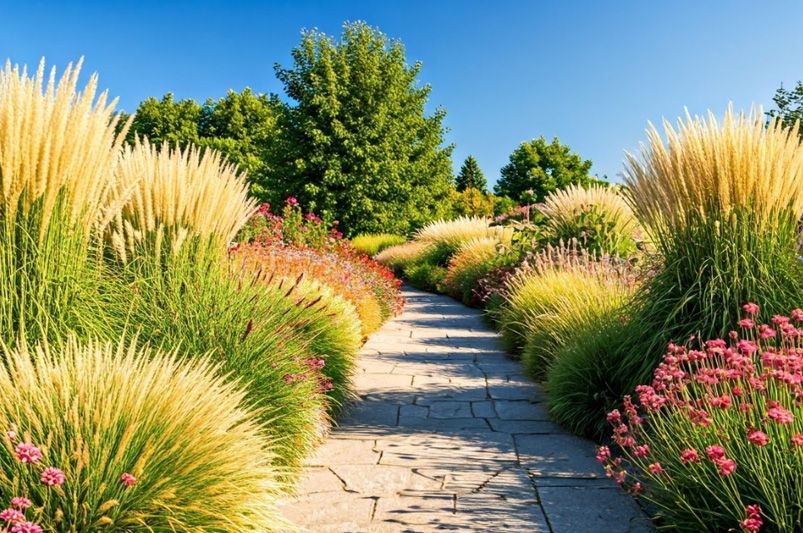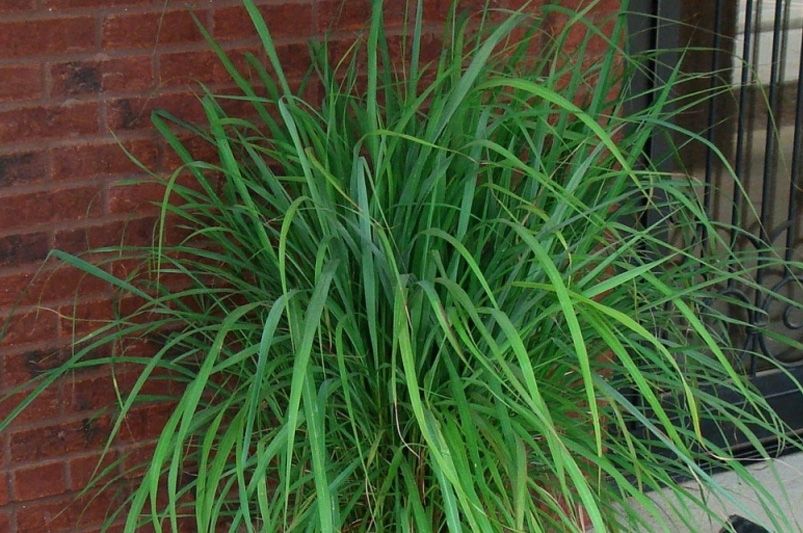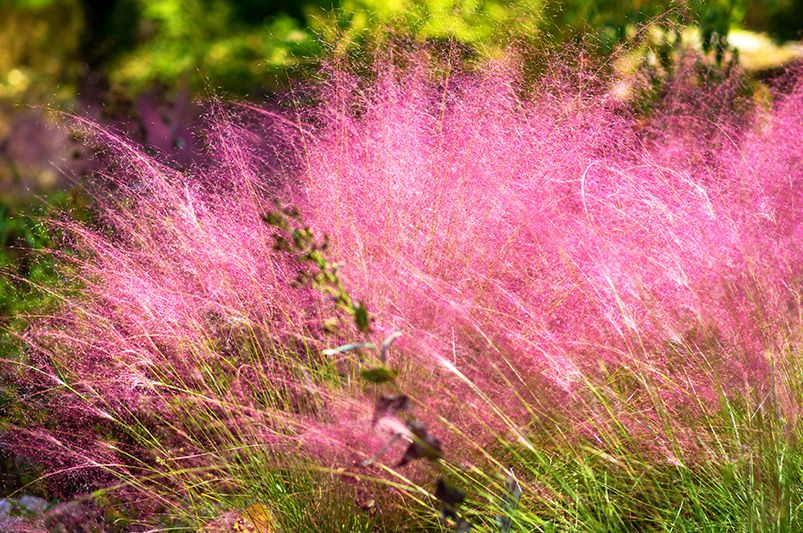
Discover the Beauty of Ornamental Grasses
Published: 05/11/2024 | Updated: 04/11/2024
Key Highlights
- Ornamental grasses offer year-round beauty and textural interest to gardens.
- They come in various sizes, shapes, and colors, suitable for diverse garden designs.
- Many ornamental grasses are low-maintenance and drought-tolerant, making them suitable for various growing conditions.
- These grasses provide visual appeal, movement, and sound with their rustling leaves and swaying flower plumes.
- From native varieties like Schizachyrium scoparium to exotic choices like pampas grass, there are options for every gardener's preference.
Introduction
Ornamental grasses are now very popular in garden design. People love them for their beauty and flexibility. They add a natural charm, movement, and texture. This can turn any garden into a peaceful place. You might want to create a wild look, add some bold shapes, or make hard surfaces gentler. Ornamental grasses can help you do all this and more to make your outdoor area better.


Understanding Ornamental Grasses
Ornamental grasses often don’t get enough attention, but they should be a key part of our gardens. They are more than just green plants. They come in many beautiful colors like bright blues, golden yellows, deep reds, and purplish shades. Their textures are also different, featuring fine, hair-like leaves and bold seed heads.
Unlike regular grass, ornamental grasses are usually grown alone to create a focal point. They add height, movement, and charm to borders, meadows, and pot arrangements. Many types of these grasses also make a lovely rustling sound when the wind blows, making the garden more enjoyable for us.
Definition and Characteristics
Most ornamental grasses are part of the Poaceae family. This group includes many types of grasses that people grow for their beauty. Some have colorful leaf blades, while others have stunning flower plumes or interesting seed heads.
A key feature of ornamental grasses is their long leaves. These leaves often curve gracefully or stand straight up in clumps. The colors of the leaf blades vary, including different greens, blues, silvers, golds, reds, and even patterns with multiple colors. Many ornamental grasses create feathery or spiky flower plumes that grow taller than the leaves, bringing height and interest to gardens.
These plumes, known as "seed heads," change as they grow. They can change colors and textures as the seasons go by. Some become soft and fluffy, while others look more like sculptures, bringing unique details to winter gardens.

Benefits in Landscaping and Garden Design
The charm of ornamental grasses goes beyond how they look. They are very useful and offer many advantages for landscaping and garden design. One major benefit is that they do not need much maintenance. Once established, many ornamental grasses can survive with little watering and fertilizing.
Also, they adapt well to different types of soil and light. This makes them a great choice for various garden styles. Whether you have a sunny spot, a shady area in the woods, or a wet region, there is an ornamental grass that will thrive in your garden.
Another great thing about ornamental grasses is that they look good all year round. In spring, their fresh leaves come in. In summer, they have showy flower plumes. In autumn, they display beautiful golden colors. Many of them keep their seed heads throughout winter, adding structure and texture when other plants have dried up.
Selecting the Right Ornamental Grasses
Choosing the right ornamental grasses for your garden can feel tricky because there are so many options. However, looking at a few important factors can help you narrow down your choices and find the best grasses for your space.
First, think about the conditions in your garden. Look at the soil type, how much sun it gets, and how much room you have. Next, consider the size and shape of the grasses when they are fully grown. Make sure they will fit well with your other plants.
Considering Climate and Hardiness Zones in the United States
The United States has many different climates. This affects which ornamental grasses grow well in each place. Hardiness zones show the average low winter temperatures. These zones help decide which plants are suitable.
When picking ornamental grasses, check your area's hardiness zone. Choose plants that can survive those temperatures. Most ornamental grasses like well-drained soil and need full sun or part shade. They should get at least six hours of direct sunlight each day. Yet, some grasses can grow in shadier spots.
If you live in a cold area with tough winters, look for cold-hardy grasses. These plants can survive in lower hardiness zones. If you have a warmer area with mild winters, you can choose from many warm-season grasses.
Grasses for Sun vs. Shade Tolerance
Sunlight is important for the growth and health of ornamental grasses. Most grasses do best in full sun and need at least six hours of direct sunlight each day. However, some grasses can grow well in shady places, which makes them great for woodland gardens or areas with mixed light.
Grasses that grow in full sun usually show brighter colors and stronger growth. Some popular choices are fountain grass (Pennisetum setaceum), switchgrass (Panicum virgatum), and little bluestem (Schizachyrium scoparium).
For shaded areas, you can choose Japanese forest grass (Hakonechloa macra), Northern sea oats (Chasmanthium latifolium), or tufted hair grass (Deschampsia cespitosa). These grasses that tolerate shade can bring texture and movement to spaces that do not get much sunlight.
Popular Types of Ornamental Grasses

From the beautiful fountain grass to the light feel of muhly grass, there is a whole world of ornamental grasses to discover. Each type has its own special appeal. Let’s look at a few popular kinds that can inspire your garden design.
Whether you want native types or unique choices, an ornamental grass can fit well with your garden's style.
Native Grasses for Sustainable Landscaping
Incorporating native grasses in your garden helps create a more eco-friendly space. These grasses are well-suited for local weather and soil, making them easy to care for and strong.
Native grasses are very important in habitat gardens. They provide food and shelter for helpful insects, birds, and other animals. For example, the seed heads of little bluestem (Schizachyrium scoparium) give birds food in the winter. Indian grass (Sorghastrum nutans) provides materials for nesting.
These grasses also help with erosion control. Their long roots hold the soil in place on slopes and reduce water runoff. You might want to consider using switchgrass (Panicum virgatum), big bluestem (Andropogon gerardii), or prairie dropseed (Sporobolus heterolepis) for these benefits.
Exotic Grasses for Unique Garden Aesthetics
Using native grasses in your landscaping is good for the environment. However, exotic grasses can add a special flair and beauty. These grasses come from different parts of the world and bring interesting shapes, textures, and colors to your garden.
Pampas grass (Cortaderia selloana) stands tall with its fluffy flowers. It quickly adds a touch of elegance and drama to any space. Its size and unique look make it a perfect centerpiece.
Other exotic grasses, such as purple fountain grass (Pennisetum setaceum 'Purpureum') and Japanese blood grass (Imperata cylindrica 'Red Baron'), bring bright colors to your garden. Their stunning leaves often come in shades like red, purple, or burgundy. This creates a strong contrast with green plants.
It's important to be aware that some exotic grasses can grow too much and spread in some areas. Before planting, be sure to check if they can become invasive where you live. You should also think about using native grasses as an alternative.
Planting and Care Instructions
Planting ornamental grasses the right way and taking care of them helps them grow well. This, in turn, makes your garden beautiful for many years. If you follow some simple tips, you can make the best environment for these lovely plants to do well.
Start by picking the best spot to plant them. Then, learn how to take care of them properly. This will help your ornamental grasses to thrive.
Best Practices for Planting
The best time to plant ornamental grasses depends on the climate in your area. For most types, early spring is the best time. This is when the ground starts to thaw, and new growth appears. Planting at this time helps the grasses grow roots before the summer heat hits.
In warmer regions with mild winters, you can also plant in late winter. The cooler weather and more rain help the roots grow well. Make sure to pick a spot with good drainage and enough sunlight for the type of grass you choose.
To plant, dig a hole that is twice as wide as the root ball and the same depth. Carefully take the grass out of its pot. Loosen any roots that are circling, and place it in the hole. Make sure the top of the root ball is level with the ground. Fill the hole with soil, water it well, and add mulch around the base. This will help keep moisture in and stop weeds from growing.

Watering, Feeding, and Pruning Tips
Once they are established, most ornamental grasses do well during dry spells and need little water. However, in the first growing season, giving them regular water helps their roots grow strong.
Here is a simple guide on how to water, feed, and prune ornamental grasses:
Watering:
- Water deeply but not too often. Let the soil dry out a bit between waterings.
- Don’t give too much water, as this can cause root rot.
- Cut back on watering during the dormant season.
Feeding:
- Ornamental grasses usually do not need much fertilization.
- A small amount of slow-release fertilizer in spring is enough for most types.
- Don’t fertilize in late summer or fall, as it can lead to new growth that is more open to frost damage.
Pruning:
- Trim back deciduous grasses in late winter or early spring before new growth starts.
- Keep evergreen grasses mostly as they are but remove any dead or damaged leaves.
- Every few years, divide clumps that have become too big in spring or fall to keep them healthy and shaped well.
Conclusion
Ornamental grasses make your garden beautiful and flexible. Knowing their features and benefits can make your garden even nicer. By picking the right grass for the climate and sunlight, you can make a strong and pretty outdoor space. Taking care of ornamental grasses needs attention to detail for the best growth and color. Think about using native or exotic types to match your style. Share your passion for ornamental grasses on social media to encourage others to garden. Discover the wide variety of ornamental grasses and improve your landscape with these lovely plants.
Frequently Asked Questions
How do I choose the right ornamental grass for my garden?
Think about your climate, garden size, and what you want to achieve. Look at how much time you have for upkeep. Also, consider what you want it to look like during different seasons. Decide if you want plants that love the sun or ones that can grow in the shade.
Can ornamental grasses survive harsh winters?
Choose hardy ornamental grasses that fit your climate zone. In the winter, take care of them by adding mulch around the base. This will help insulate the roots and protect them from freezing temperatures.
When is the best time to plant ornamental grasses?
The best time to plant grass depends on where you live and what type of grass you choose. Usually, early spring and late summer are good times. During these periods, the soil is warm enough for roots to grow well.
Are there any invasive ornamental grasses I should avoid?
- Look for invasive species in your area.
- Think about native plants that could replace them.
- This helps keep your garden balanced and supports diversity.
- Check local rules or ask experts for help in choosing the right plants.
Need Assistance for a Complete Landscape Makeover?
Shrubhub’s landscape design packages can significantly transform the lives of homeowners by delivering customized, professional landscaping plans tailored to their unique space and personal style. With the ease of online collaboration, you are guided step-by-step through a design process that fundamentally reshapes your outdoor environment. The result is an aesthetically pleasing and functional outdoor living area that maximizes the potential of your property.


